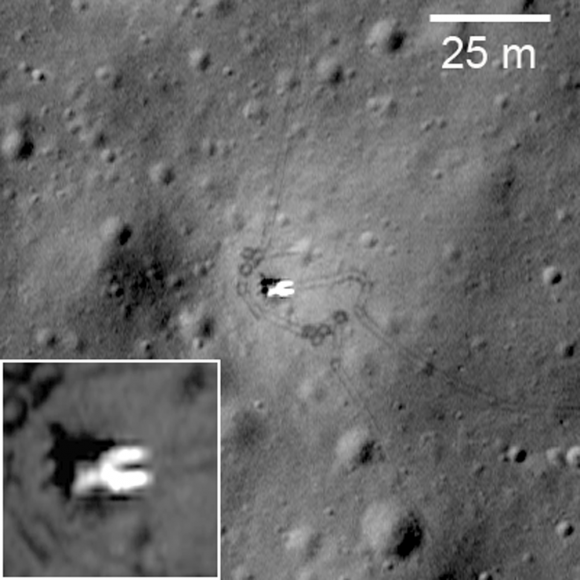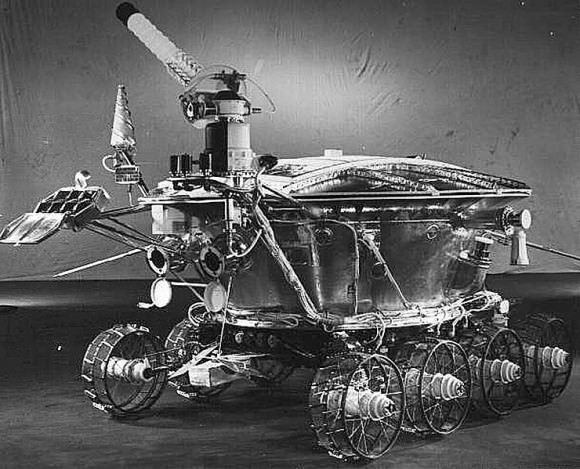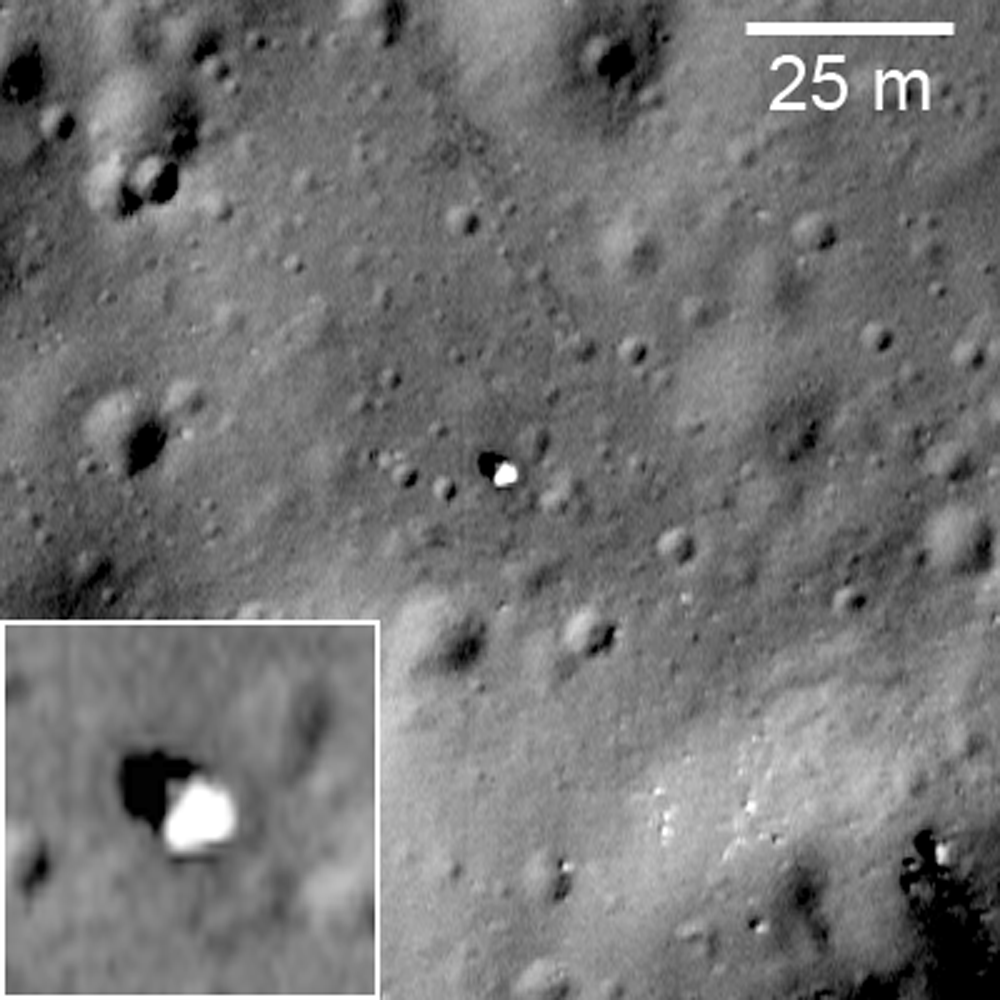[/caption]
Before there was Curiosity, before Spirit, and Opportunity, and even long before Sojourner, there was Lunokhod 1, the Soviet Union’s lunar rover that explored Mare Imbrium from November of 1970 to September the following year. It was a curious-looking machine, a steampunk fantasy reminiscent of something out of a Jules Verne novel. But until the Mars Exploration Rovers nearly 40 years later, Lunokhod 1 held the record for the longest-operating robotic rover on the surface of another world.
These images from the Lunar Reconnaissance Orbiter Camera (LROC) are the most detailed yet of the now-silent Soviet rover and its lander, Luna 17.
The lander, Luna 17, was launched from Earth orbit on November 10, 1970, and entered lunar orbit five days later. It successfully soft-landed in Mare Imbrium on November 17 and deployed the Lunokhod (“moon walker” in Russian) rover, which was powered by batteries that were recharged via solar power during the lunar day.

The 5600 kg (12,345 lb.) Lunokhod 1 boasted a suite of scientific tools for exploring the lunar surface. It was equipped with a cone-shaped antenna, a highly directional helical antenna, four television cameras, and special extendable devices to impact the lunar soil for soil density and mechanical property tests.
An x-ray spectrometer, an x-ray telescope, cosmic-ray detectors, and a laser device were also included.

Operating for nearly 300 days — almost four times longer than planned — by the time it officially ceased operations in October 1971 Lunokhod 1 had traveled 10,540 meters and had transmitted more than 20,000 images, and had conducted over 500 lunar soil tests.
The images above were obtained during a low-altitude pass by LRO, which came within 33 km (20.5 miles) of the lunar surface.
Via the LROC site by Arizona State University.


